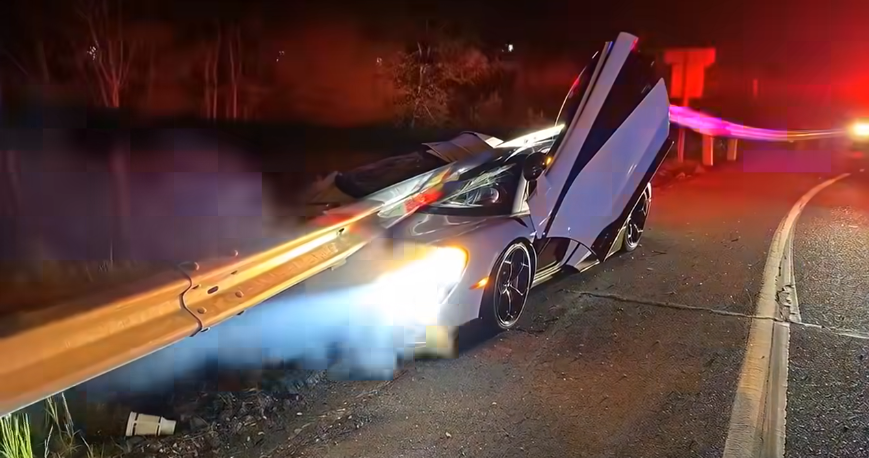In a clip shared exclusively with PEOPLE, Johnson, 50, sits back in her chair, still slightly groggy from the anesthesia, yet a visible calm and satisfaction lights up her face. Her eyes, half-lidded, glimmer with relief as she describes the experience. “I feel so relaxed… so great,” she says, letting out a soft, contented sigh. The mixture of vulnerability and humor in her voice makes it clear that this moment is both surreal and liberating.
“Sticking cameras in your booty… that’s a little cumbersome, you know,” she adds, her words laced with sleepy honesty. Norris and her son Jaden can’t help but laugh at her candor, filling the room with warmth. “For a moment, I had a little panic when it first started. I was scared, really scared. But I want people to know—it was actually very easy. Very straightforward. I feel good… no, I feel extra good because I’m on the other side of it.” Her words are a mix of triumph and relief, reflecting a deeply human experience that many might feel but few would openly admit.
The moment mirrors a story from 2019, when Dwayne Johnson faced a similar challenge. After doctors discovered a precancerous polyp, he filmed his own colonoscopy, sharing the process in a 17-minute YouTube video that has now amassed nearly four million views. At the time, Johnson explained, “When I decided to shoot this as a vlog, it was more than documenting a medical procedure. It was about confronting fears, taking responsibility for your health, and showing others that it’s okay to face something scary head-on. It’s empowering.” That message resonates with anyone who has ever hesitated to seek medical care, a reminder that bravery often looks like ordinary, human vulnerability.
Meanwhile, tragedy struck far from the world of social media and viral clips. Along the Tepic-Mazatlán freeway, three beloved high school teachers lost their lives in a morning accident at the San Blas intersection, near the town of El Jicote, Tepic, Nayarit. The news spread quickly through local communities, leaving students, colleagues, and neighbors in stunned grief. Another individual sustained injuries and was rushed to the hospital. Authorities have begun investigating the cause, but for those who knew the teachers, the shock and sorrow transcend facts. Mourners spoke of laughter-filled classrooms, dedication to students, and the irreplaceable presence these women had in the lives of countless young people. Families lit candles in memory, sharing stories that captured both the joy and the impact of lives cut tragically short.
In a far more intimate, personal story, Mrs. Cartwright revealed a secret that had lingered in the shadows of her family for decades. Through quiet tears, she explained that her husband, lost in the war many years ago, had left a letter for her to discover only if he never returned. The letter was addressed not to her alone, but to the children he would never meet. It overflowed with love, with forgiveness for past hurts, and with hope for family unity across time and circumstance.
Initially hesitant, Mrs. Cartwright agreed to share the letter with her estranged children. She arranged a small gathering in the living room, the air thick with anticipation and unspoken emotions. As the letters were read aloud, the room shifted. Tears streamed, laughter erupted unexpectedly, and decades of silence and distance began to dissolve, replaced with tentative warmth and fragile hope. The simple act of hearing words long hidden brought reconciliation and understanding that had seemed impossible.
Later, she handed me a delicate locket from the box, her hands trembling slightly. “You’re part of this story now,” she said, her voice both firm and gentle. I promised to keep it safe, understanding the weight of the gesture. Over the following weeks, we sifted through photographs, letters, and mementos together, piecing together fragments of a fractured family history. Each discovery brought new emotions—joy, sorrow, regret, and ultimately, healing. What began as a simple afternoon of reading letters transformed into a profound journey into memory, love, and the quiet yet transformative power of words finally heard.
Even in the small moments, life’s fragility and resilience shine through. Johnson’s candid reflection after her procedure reminds us of human vulnerability. The tragedy on the freeway underscores the suddenness with which life can change. And Mrs. Cartwright’s family story exemplifies the enduring power of love and communication, even across decades. These narratives, though distinct, converge on a single truth: life is unpredictable, challenging, and often painful, yet it is also capable of extraordinary kindness, healing, and human connection.
In every story, there is courage—whether it’s facing a medical procedure, coping with sudden loss, or unearthing long-buried family history. And in each, we are reminded that hope, empathy, and action—sometimes quiet, sometimes bold—can transform despair into resilience, strangers into allies, and fragmented moments into stories that endure.
